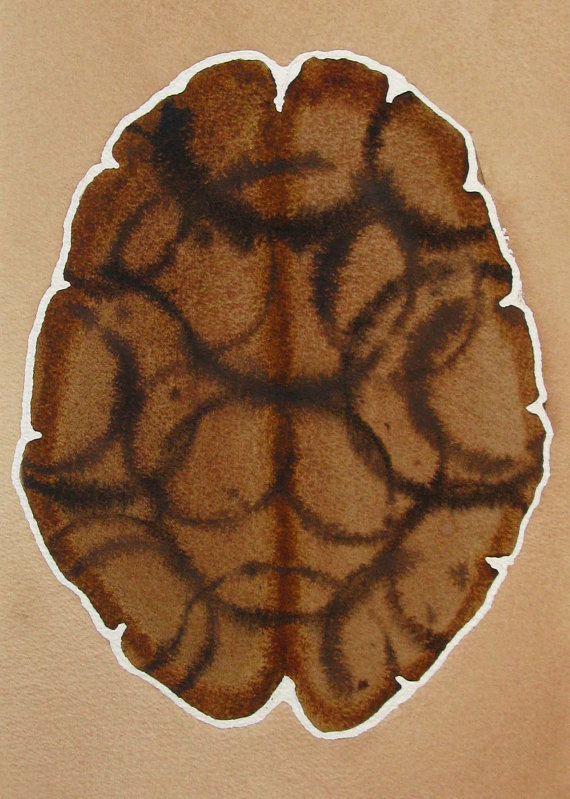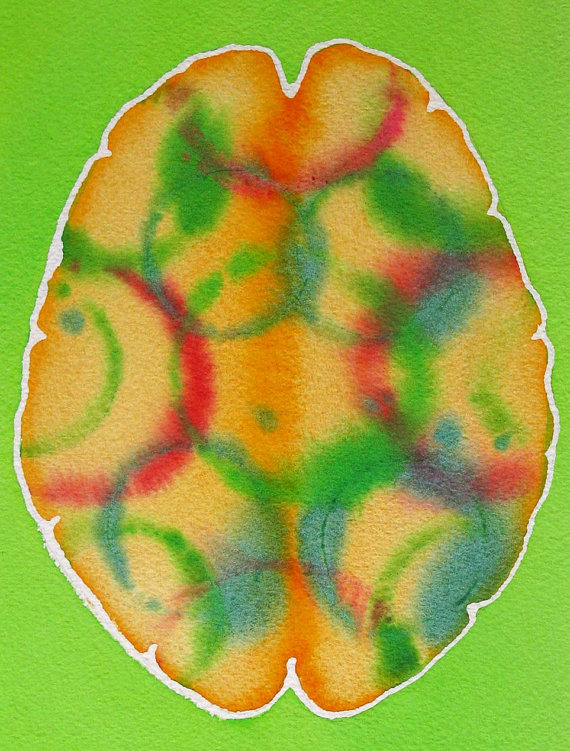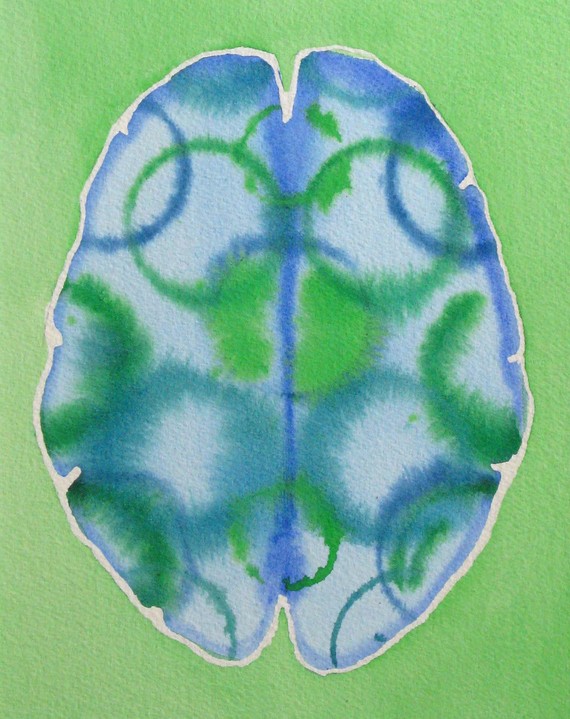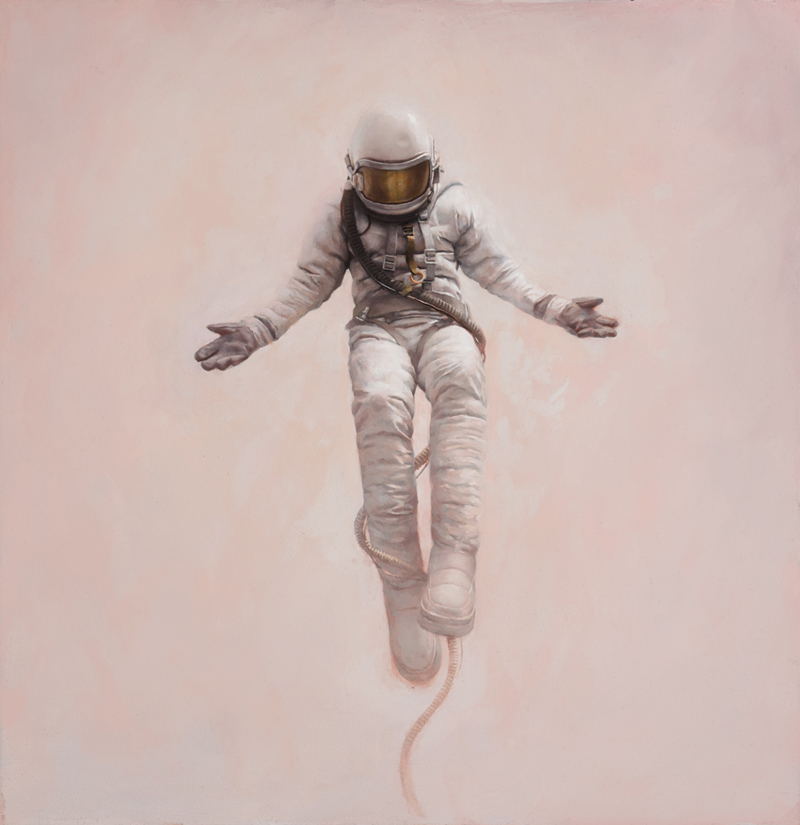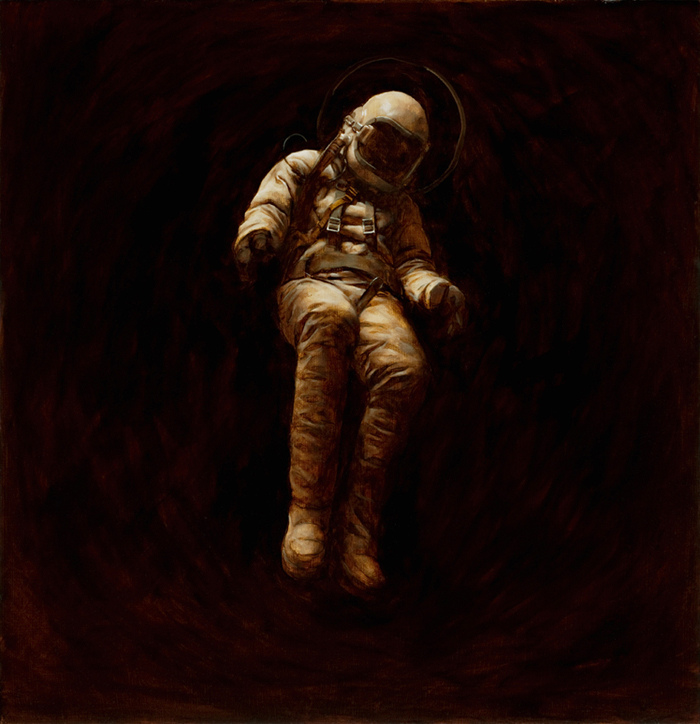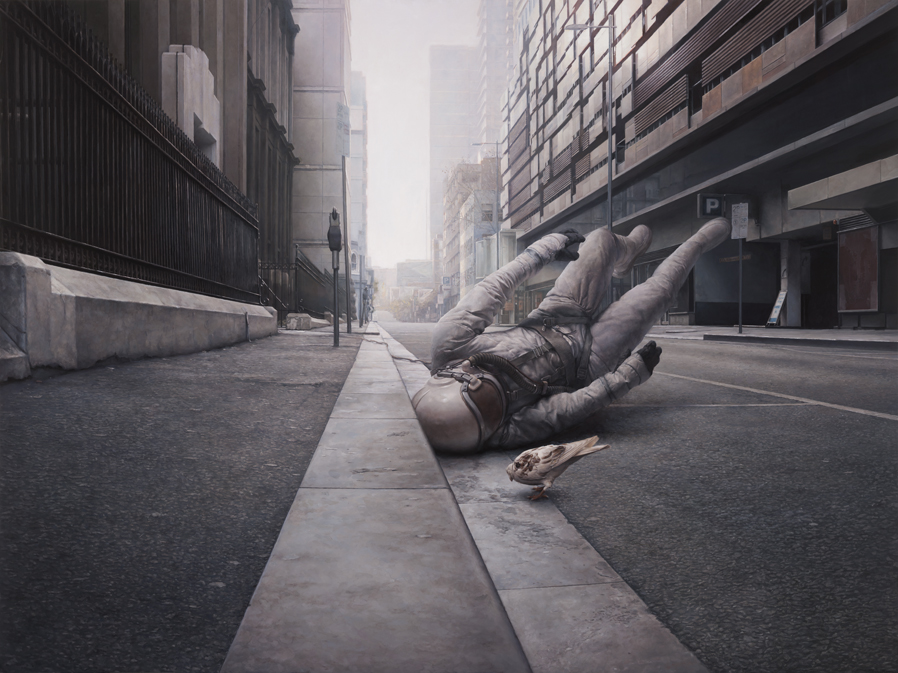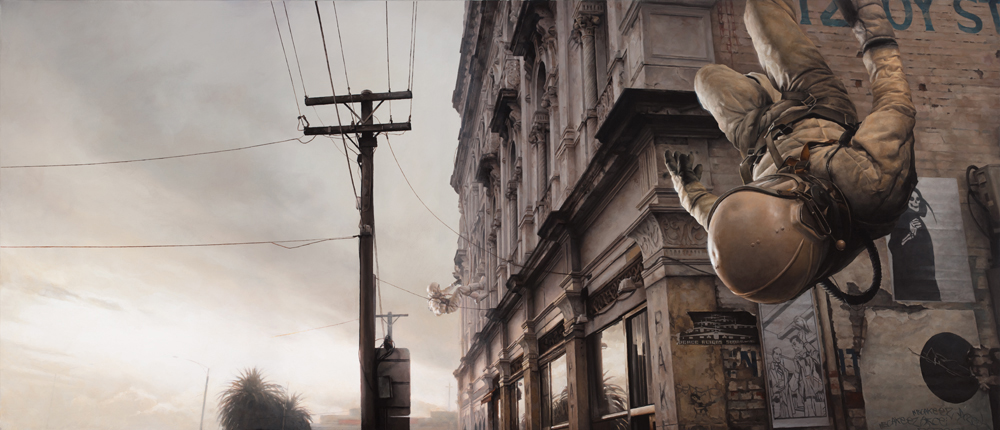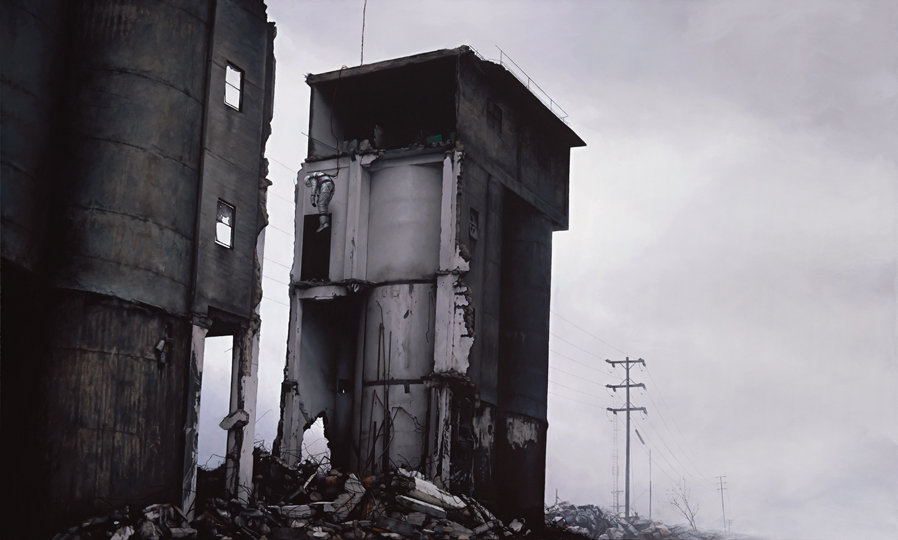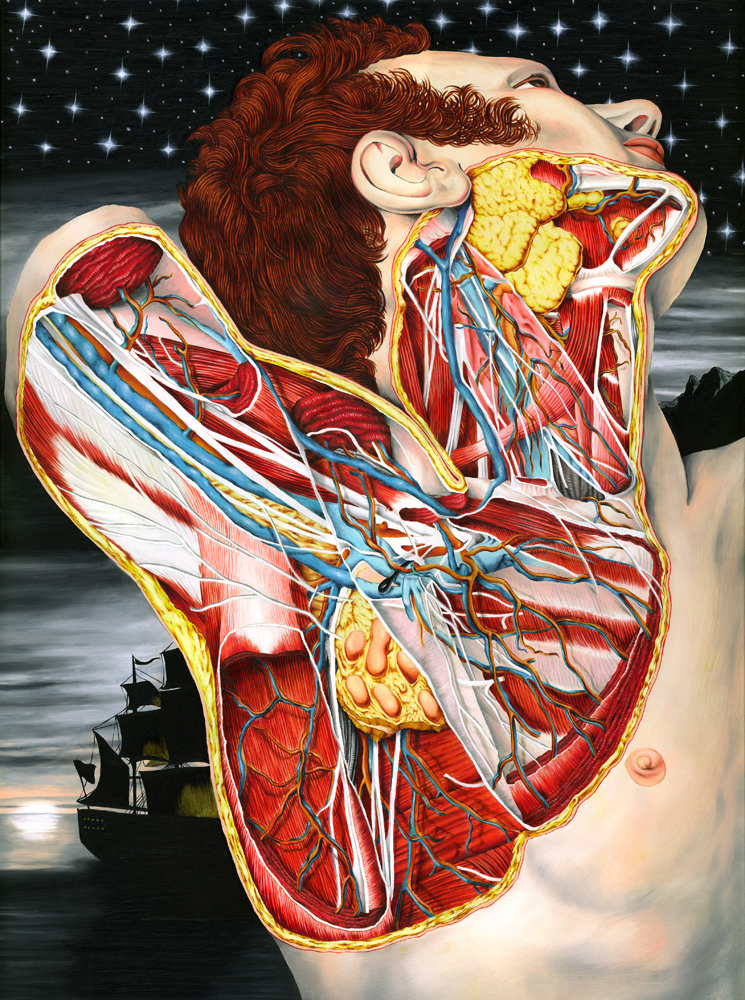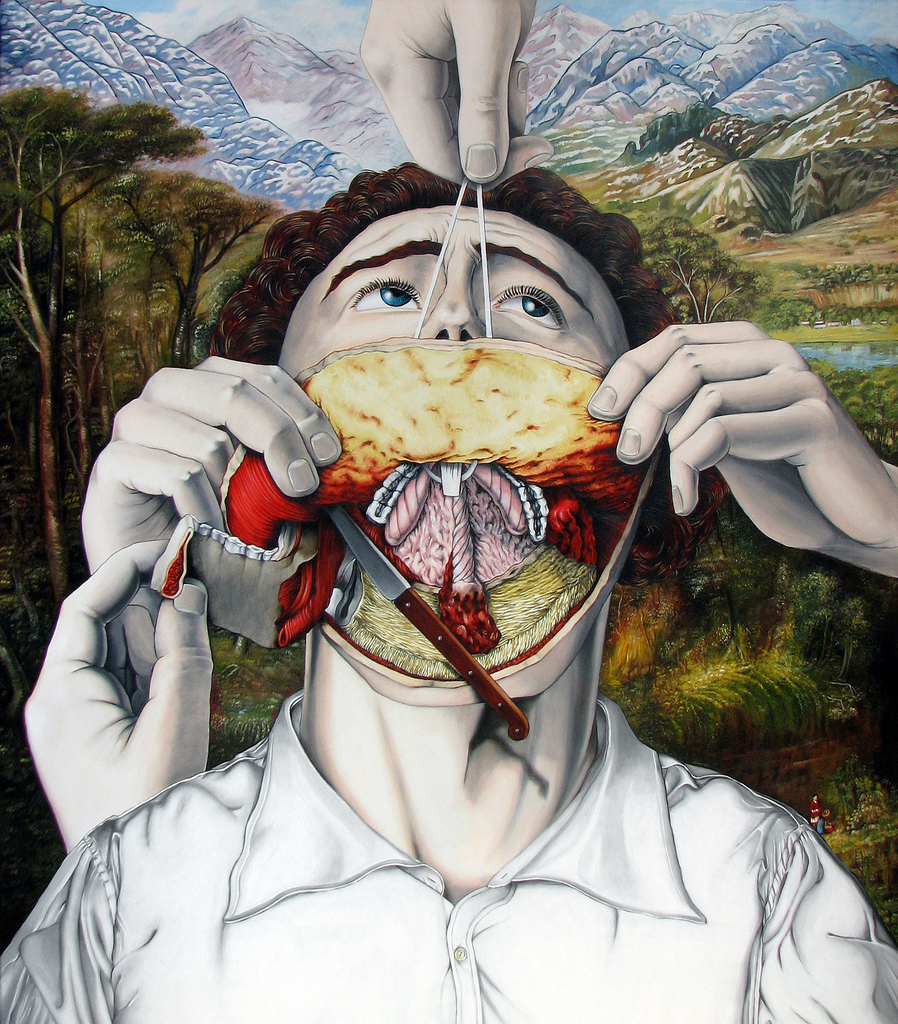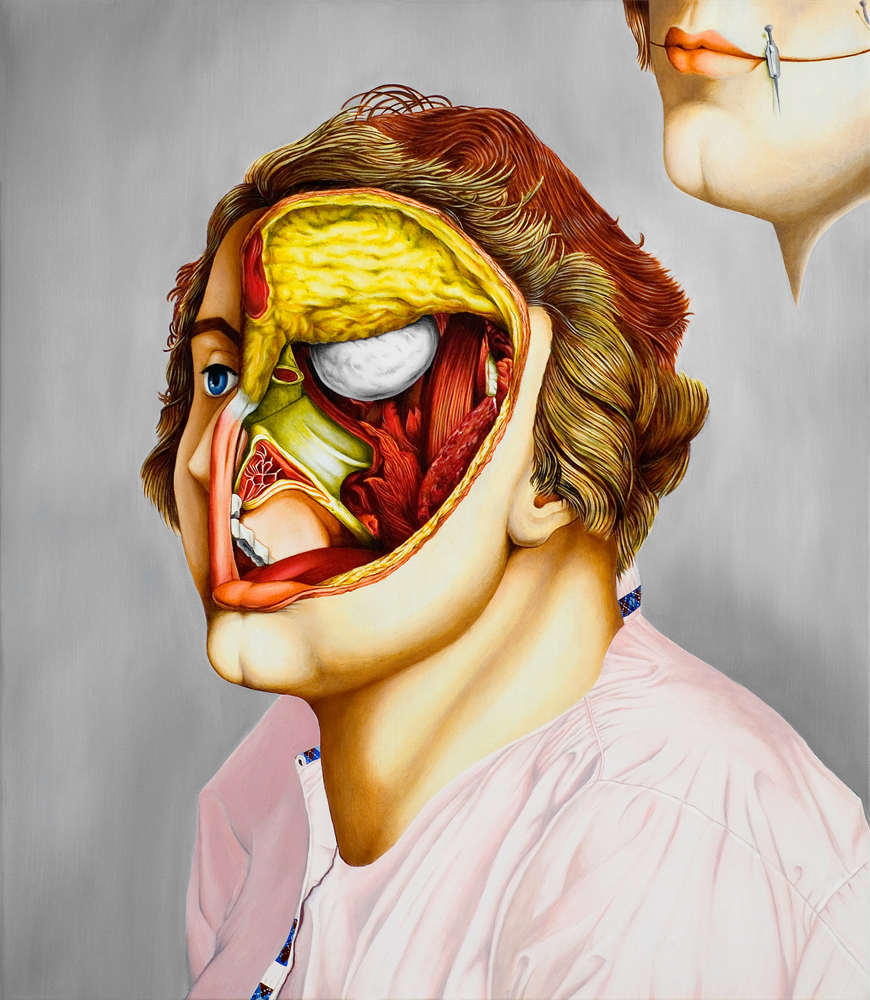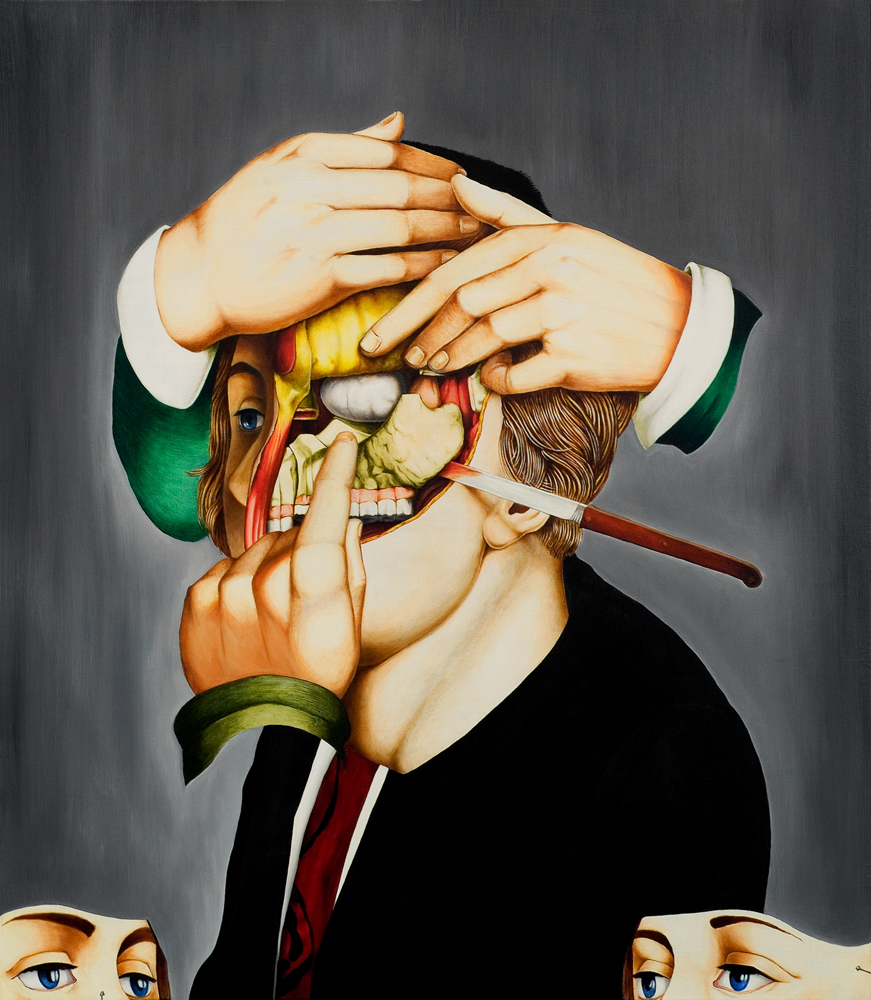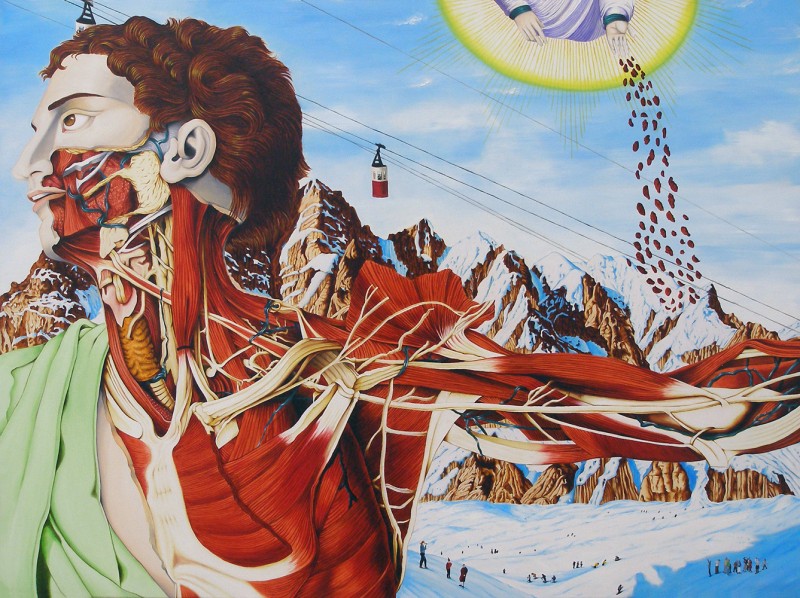Our society certainly owes a lot to caffeine. The National Coffee Association reports that around 54% of Americans drink coffee every single day, and another 25% drink coffee occasionally. And when you add in other drinks that contain caffeine like soft drinks and tea, it’s estimated that over 90% of North Americans consume caffeine daily. The drug performs its magic by acting as a central nervous stimulant, warding off drowsiness and restoring altertness. Because caffeine is both water-soluble and lipid-soluble, it readily crosses the blood–brain barrier that separates the bloodstream from the interior of the brain.
Artist Michele Banks from Washington, D.C. wanted to pay tribute to this wonderful drug by creating the excellent coffee-inspired watercolors shown above. She describes her process below:
I’ve never hidden the fact that much of my inspiration comes from caffeine. I added some to my explorations of the wonders of the human body and came up with Coffee-Stain Brain, an original watercolor painting, combining the beauty of the brain with the wonders of that most excellent elixir, coffee, without which not much progress would be made in either the arts or sciences…
I put down a background wash in a rich coffee brown shade, and then “painted” on it with a paper coffee cup dipped in paint in a dark, espresso brown. The paint spreads out a little, creating that coffee-ring-on-paper pattern familiar to many of us from studying or working late. The background is a rich, creamy, cafe au lait shade.
I really enjoy how she implemented the idea of the coffee stain into the watercolors. It almost feels as if the works were created by accident late in the night as she worked on other projects.
You can find more coffee brains and other science-inspired watercolors for sale from her website here. They would make a great addition to the lab.
-RSB

